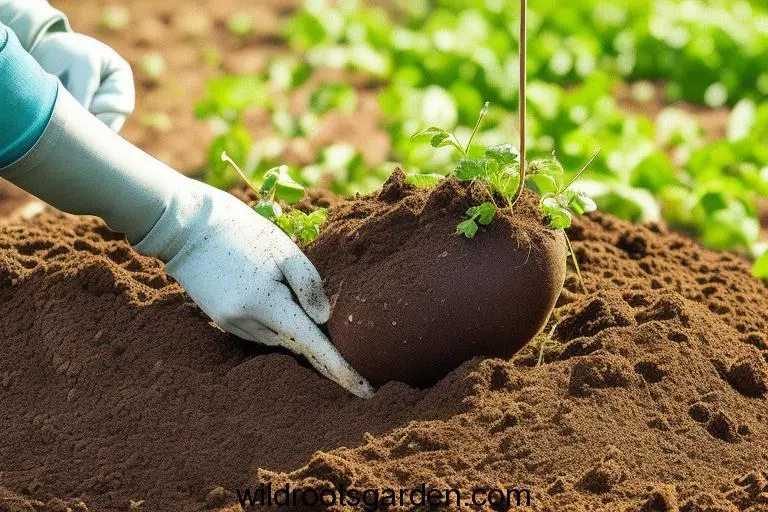Can I Plant a Whole Potato? Yes, you can plant a whole potato! Planting whole potatoes is sometimes preferable to using cut pieces, especially for larger potatoes.
Raising your crops can be satisfying, and growing potatoes is no different. Planting potatoes can be a terrific choice, whether you have a little yard or simply like the satisfaction of raising your food. But can a potato be planted whole? Let’s investigate!
The Growth Cycle of a Potato
It’s critical to comprehend the potato plant’s life cycle before beginning the complete potato planting process. Cool-season crops like potatoes do best in loose, well-drained soil. Sprouting, vegetative development, flowering, and tuber production are some of the stages they go through.
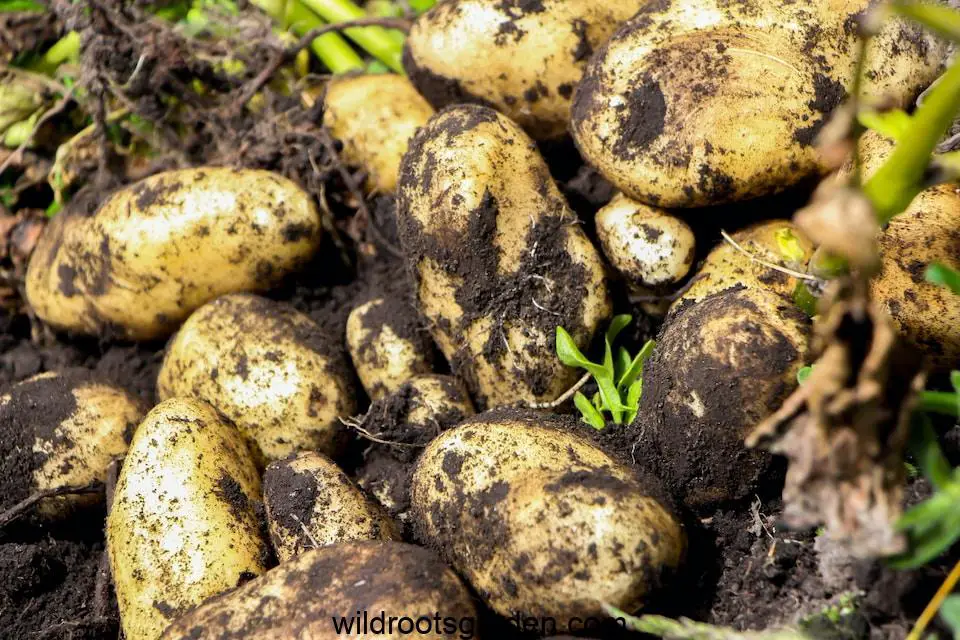
Can I Plant a Whole Potato?
- Pros:
- Easier and faster. No need to cut and dry pieces.
- Less chance of rot or disease, as the skin remains intact.
- Higher chance of multiple sprouts emerging, leading to potentially greater yield.
- Ideal for larger potatoes (golf ball size or bigger).
- Cons:
- May take longer for sprouts to appear compared to cut pieces.
- This can lead to overcrowding if several sprouts emerge, requiring thinning later.
- Not suitable for small potatoes, as they may not have enough energy to support multiple sprouts.
Planting Cut Potatoes:
- Pros:
- Faster sprouting, especially if the “eyes” (budding areas) are visible on the cut pieces.
- Better control over spacing, minimizing overcrowding in the planting hole.
- Makes use of smaller potatoes that wouldn’t have enough energy for full growth otherwise.
- Cons:
- Risk of rot or disease at the cut surfaces, especially if not properly dried.
- Takes more time and effort to prepare the pieces.
- Not ideal for larger potatoes, as they may produce several sprouts from each piece, leading to overcrowding.
Here are some factors to consider when deciding to plant whole or cut potatoes:
- Potato size: Use whole potatoes for those bigger than a golf ball and cut pieces for smaller ones.
- Sprouting speed: If you need faster results, cut pieces might be better, but whole potatoes have a higher success rate in the long run.
- Crowding concerns: If space is limited, consider cutting larger potatoes to control spacing.
- Disease risk: Ensure proper drying and disinfection of cut surfaces to minimize rot risk.
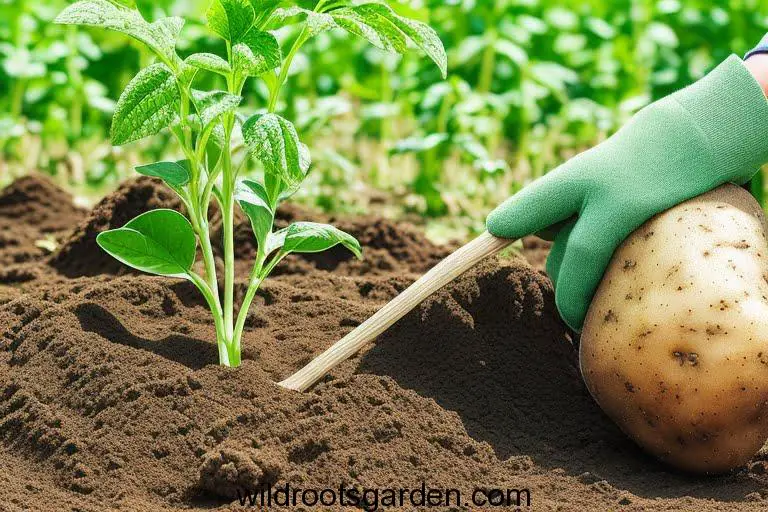
Planting a Whole Potato: Is it Possible?
You can show a complete potato and grow a new potato plant, so the answer is yes. The tiny depressions on the surface of the potato known as the eye give it its special capacity to renew. These eyes are in charge of creating new roots and branches that will eventually grow into a new plant.
Preparing the Potato for Planting
Before planting, the potato needs to be ready to enhance its likelihood of success. Choose a healthy potato with multiple mature eyeballs as a good place to start. Potatoes with green patches or decaying symptoms should not be used. The presence of the hazardous substance solanine is shown by green dots.
Selecting the Right Planting Location
Potatoes need at least six hours of direct sunlight each day and are like chilly regions. Choose a spot in your yard with plenty of sunlight and well-drained soil. Avoid waterlogged places since too much moisture can cause rotting.
Preparing the Planting Bed
With a garden fork or a tiller, loosen the soil to prepare the planting bed. Take out any weeds or other debris, then incorporate organic material, like compost or well-rotted manure. This will create a perfect environment for producing potatoes by enhancing soil fertility and drainage.
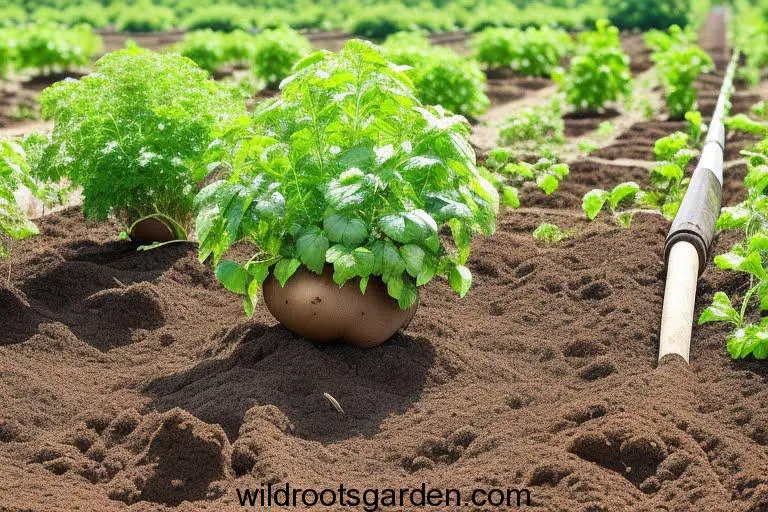
Planting the Whole Potato
In the planting bed that has been prepared, make 4-6 inch-deep trenches. With the eyes skyward, place the entire potato in the trench. To give the plants room to grow, space the potatoes about 12 to 15 inches apart. The soil over the potatoes leaves a little mound to allow for water drainage.
Caring for the Growing Potato Plant
After the potatoes are planted, it’s important to give the plants the care they need to grow. Here are a few crucial actions:
a) Watering and Fertilizing
Maintain a constant moisture level in the soil that is not wet. Do not overwater, as this might cause rotting. Provide a balanced fertilizer when the plants start to emerge to encourage strong development. Every few weeks, repeat the fertilization process.
b) Protecting the Potato Plant
As potato plants are susceptible to diseases and pests, it is crucial to take precautions. Use companion plants or organic insecticides to repel pests. Regularly check the plants for disease symptoms, such as blight, and respond appropriately if necessary.
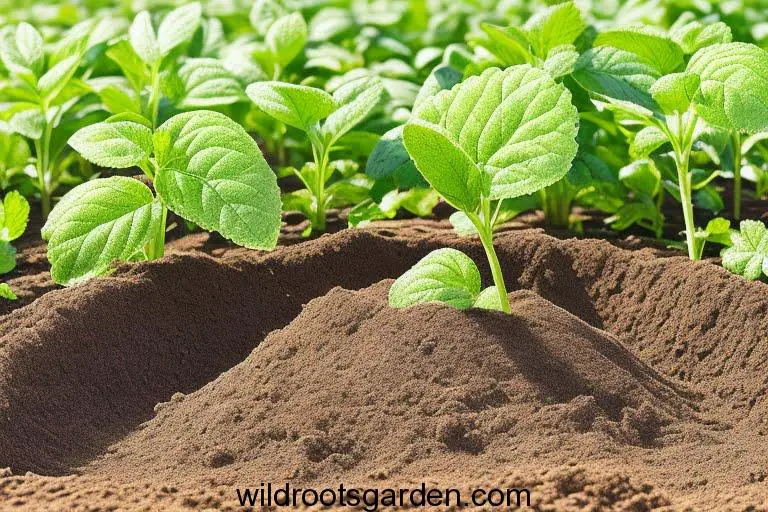
9. Harvesting the Potatoes
The foliage normally starts to turn yellow and die back before the potatoes are ready to be harvested. To delicately dig up the potatoes, use a garden fork or a shovel, taking care not to harm them. Before storing or eating, let the potatoes dry for a few hours in a cool, dark location.
Storing and Using the Harvested Potatoes
Keep the potatoes cool, dry, and dark after harvesting. Avoid placing them in hot or direct sunlight, as these conditions might lead to sprouting or deterioration. For the finest flavor and quality, use the gathered potatoes right away.
Benefits of Planting Whole Potatoes
Planting whole potatoes offers several benefits:
Cost-effective: You can start growing potatoes in your kitchen without purchasing specific seed potatoes.
Easy propagation: Planting whole potatoes is a simple method, suitable for beginners.
Variety preservation: Planting whole potatoes allows you to grow the same variety of potatoes you enjoy, maintaining their unique characteristics.
12. Common Mistakes to Avoid
To ensure success when planting whole potatoes, avoid these common mistakes:
- Using potatoes treated with sprout inhibitors
- Planting potatoes too closely together
- Overwatering or underwatering the plants
- Neglecting pest and disease control measures
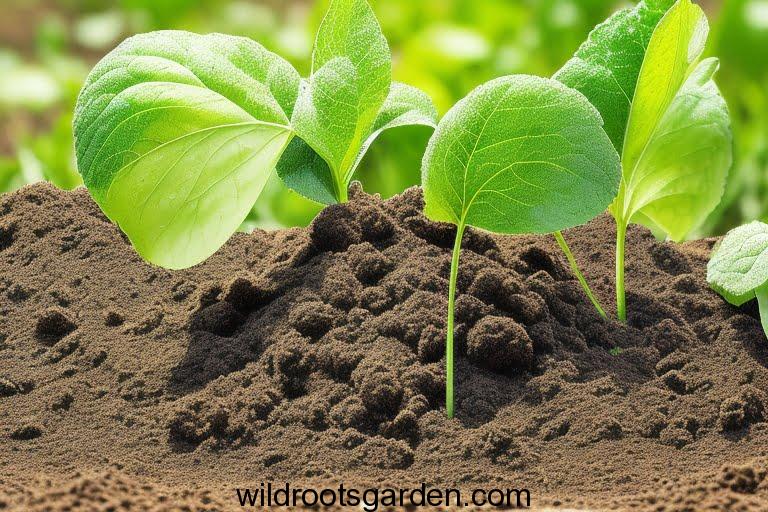
FINAL THOUGHTS
To sum up, planting a whole potato can result in the development of a new potato plant. You can take pleasure in the entire process of cultivating your potatoes by following the instructions provided in this article. Choose a healthy potato, make sure the planting area is ready, and take good care of the plant all through its life cycle.
FAQs About Can I Plant a Whole Potato?
Can I plant any type of potato?
The majority of potato cultivars, including heirloom and readily available kinds, can be planted.
How long does it take for potatoes to sprout?
After planting, potatoes normally sprout two to three weeks later, depending on the variety and growing environment.
Can I plant store-bought potatoes that have sprouted?
Yes, you can plant sprouted potatoes that you bought at the shop. These might not produce as much or as high a quality crop as certified seed potatoes, though.
Do potatoes need a lot of space to grow?
Although they can be grown in containers or tiny areas, potatoes still need enough space for the plants to spread out and develop tubers. The transmission of illness and competition are both reduced by adequate spacing.
Can I plant potatoes in pots or containers?
Yes, you can grow potatoes in pots or other containers as long as they have enough drainage and depth for root growth. Choose a sizable container, and plant and care for it according to the best standards.

